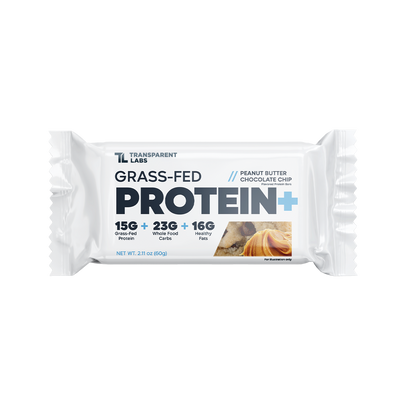Carb Cycling for Beginners: Eat More Carbs to Get Lean!

You’re likely up to speed on how important calorie control is for fat loss, but carbohydrate (carb) cycling is the next step to accelerate that process. Many people assume they should cut back on carbs when they want to lose weight, but that's not necessarily prudent. Carbohydrates are protein-sparing nutrients that play an important role in maintaining lean muscle mass during a cutting phase.
In fact, the initial rapid weight loss after switching to a very-low-carb/ketogenic diet is largely a result of glycogen and body water fluctuations. So yes, cutting carbs can help with fat loss, but carbs aren't intrinsically the enemy. Frankly, they can be your ally with the right strategy in place.
This guide will explain what carb cycling is, how it works physiologically, and how to create your own carb-cycling diet to improve body composition!
What Is Carb Cycling, Exactly?
Carb cycling is a dietary protocol that modulates your daily carbohydrate intake throughout the week. The general terminology for carb cycling is as follows:
-
No-Carb Day
- The word “no-carb” in this case means you will avoid all starchy and direct carb sources. It is acceptable to ingest some carbohydrates from vegetables and fat sources, but the amount will be rather trivial. As a rule of thumb, you should consume less than 5% of your total calorie intake from carbs on no-carb days.
-
Low-Carb Day
- A starting point for low-carb days is to aim for 25% of your total calorie intake in the form of carbohydrates. Highly insulin sensitive individuals may be able to consume upwards of 35% of their calories from carbs on these days and still lose body fat at a consistent rate.
-
High-Carb Day
- On high-carb days, sometimes called "refeed days," you'll get to splurge a bit and eat a generous amount of carbs. We recommend aiming for 40% of your total calorie intake from carbohydrates on these days, and eating slightly more calories overall.
Depending on your insulin sensitivity (i.e. how well your body utilizes carbohydrates), you may have to adjust the amount of carbs you consume on low-carb and high-carb days. Listen to your body and monitor your progress so you can fine-tune your carb intake throughout the week.
The Science of Carb Cycling: How It Works
The most significant hormonal changes that come from chronic calorie restriction are reductions of thyroid hormones and leptin [2, 3]. Cycling your carbohydrate intake is a way to "revive" metabolic rate on a fat-loss diet, notably by stimulating thyroid and leptin production [1].
Metabolic rate is affected by these hormonal alterations for two reasons:
- First, the main role of leptin is regulating how many calories you burn and how many calories you consume.
- Second, thyroid hormones interact with nearly every cell in your body to control metabolic rate; when thyroid levels drop, metabolic rate tends to decline and vice versa.
So, how can you mitigate the diet-induced suppression of leptin and thyroid during a weight-loss phase? Well, increasing carbohydrates, even acutely, has a strong bolstering effect on leptin production, thyroid activity and, by extension, metabolism [4].
Hopefully, now you can see why eliminating carbs altogether can actually be counterproductive for fat loss.
Metabolic Efficiency Explained

Fat loss requires us to burn more calories than we consume, but if you do that for a long period of time the body adapts by reducing metabolic rate. The human body is smart and its primary concern will always be survival; intuitively, it wouldn’t make much sense for your body to burn more energy when calorie intake is limited.
Contrary to popular belief, if you are looking to shred body fat, you want to have an inefficient metabolism. An inefficient metabolism will require more energy than an efficient one. Still confused how that makes sense?
A good way to think of this is as your metabolism being a vehicle and food is your fuel source; you want a less efficient vehicle as it will need more gas to travel the same distance as a more efficient vehicle. So in metaphorical terms, if you’re going to eat more (e.g. maximize the amount of gas you need to get from A to B), you better decrease your metabolic efficiency…or start shopping for a Hummer.
Ultimately, the less efficient your metabolism is, the more you can eat throughout the process of shedding off unwanted body fat. Thus, the best solution to avoid reductions in metabolic rate is to increase energy intake, particularly from carbohydrates, for a brief period to help increase your metabolism and fat-burning hormone levels. This is precisely why this guide incorporates a high-carb day each week.
Determine Your Daily Calorie and Macronutrient Needs
Whichever weight category you fall into, those will be the number of calories and macronutrients you will aim for on the given days.
| Weight (lbs) | Calorie Goal | No-Carb Day Macros | Low-Carb Day Macros |
| 100-120 lbs | 1,500 | 170/20/85 | 150/94/58 |
| 121-140 lbs | 1,700 | 193/23/96 | 170/107/66 |
| 141-160 lbs | 1,900 | 216/26/107 | 190/120/74 |
| 161-180 lbs | 2,100 | 239/29/118 | 210/133/82 |
| 181-200 lbs | 2,300 | 262/32/129 | 230/146/90 |
| 201-220 lbs | 2,400 | 273/34/135 | 240/153/94 |
| 221-240 lbs | 2,500 | 285/35/140 | 250/160/98 |
| 241-260 lbs | 2,600 | 297/36/146 | 260/166/102 |
| 261+ lbs | 2,700 | 309/38/157 | 270/172/106 |
***Macros given as grams of Protein/Carbohydrate/Fat
High-Carb Day Calorie and Macronutrient Breakdown:
| Weight (lbs) | Calorie Goal | High-Carb Day Macros |
| 100-120 lbs | 2,000 | 150/250/56 |
| 121-140 lbs | 2,200 | 165/275/60 |
| 141-160 lbs | 2,400 | 170/300/64 |
| 161-180 lbs | 2,600 | 185/325/68 |
| 181-200 lbs | 2,800 | 200/350/72 |
| 201-220 lbs | 2,900 | 208/368/74 |
| 221-240 lbs | 3,000 | 216/381/76 |
| 241-260 lbs | 3,100 | 224/394/78 |
| 261+ lbs | 3,200 | 232/407/80 |
***Macros given as grams of Protein/Carbohydrate/Fat
Carb Cycling Diet Rotation
- No-Carb Days: 3 per week
- Low-Carb Days: 3 per week
- High-Carb/Refeed Days: 1 per week
| Monday | Tuesday | Wednesday | Thursday | Friday | Saturday | Sunday |
| Low-Carb | Low-Carb | No-Carb | No-Carb | No-Carb | High-Carb | Low-Carb |
Keep track of everything you put in your mouth. Make sure you’re weighing out your portions and reading food labels, so you have the proper serving size measurements. There are many apps available nowadays, such as MyFitnessPal, that easily allows you to log your food intake.
You should aim to eat 4-6 meals per day! Simply spread out your calorie and macronutrient intake accordingly. Don’t worry if you indulge a little bit here and there; the most important thing is to meet your calorie and macronutrient goals at the end of the day!
Exercise Considerations

Hopefully, you didn’t make it this far and think that exercise wasn’t part of the plan. As awesome as it would be to cut fat while sitting on the couch all day, that’s just not going to happen (at least not in a sustainable fashion). But don’t worry, you don’t have to train like a bodybuilder or anything just to cut off body-fat.
Even just a few high-intensity workouts per week will do wonders for enhancing the fat loss process. In fact, studies show that as little as 10-15 minutes of high-intensity interval training (HIIT) three times per week is more effective for fat loss than doing one hour of low-intensity cardio five times per week [5].
Not sure how to perform HIIT? No problem. Below is a simple outline of how you can perform a quick, effective HIIT workout with or without access to a gym:
- Warm up with 5-10 minutes of light jogging
- Sprint as fast as possible for 15-20 seconds
- Walk for 45-60 seconds until you are fully recovered
- Repeat steps 2 and 3 for between 5-10 intervals (aim to improve your capacity over time)
- Cool down with 5 minutes of stretching
You can and should also incorporate at least three sessions of resistance training each week if possible. If you’re not familiar with how to set up a weight training program, be sure to check out our Push-Pull-Legs Routine.
An example workout schedule for weight loss might look like this:
| Monday | Tuesday | Wednesday | Thursday | Friday | Saturday | Sunday |
| 20 Minutes HIIT | Weight Training | Weight Training | 20 Minutes HIIT | Weight Training | 20 Minutes HIIT | Rest Day |
Remember, stick to your diet and be consistent in the gym. Getting lean(er) takes time and effort. Thankfully, with a carb cycling approach, you can cut body fat, maintain muscle mass, and have fun doing it!









